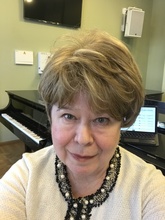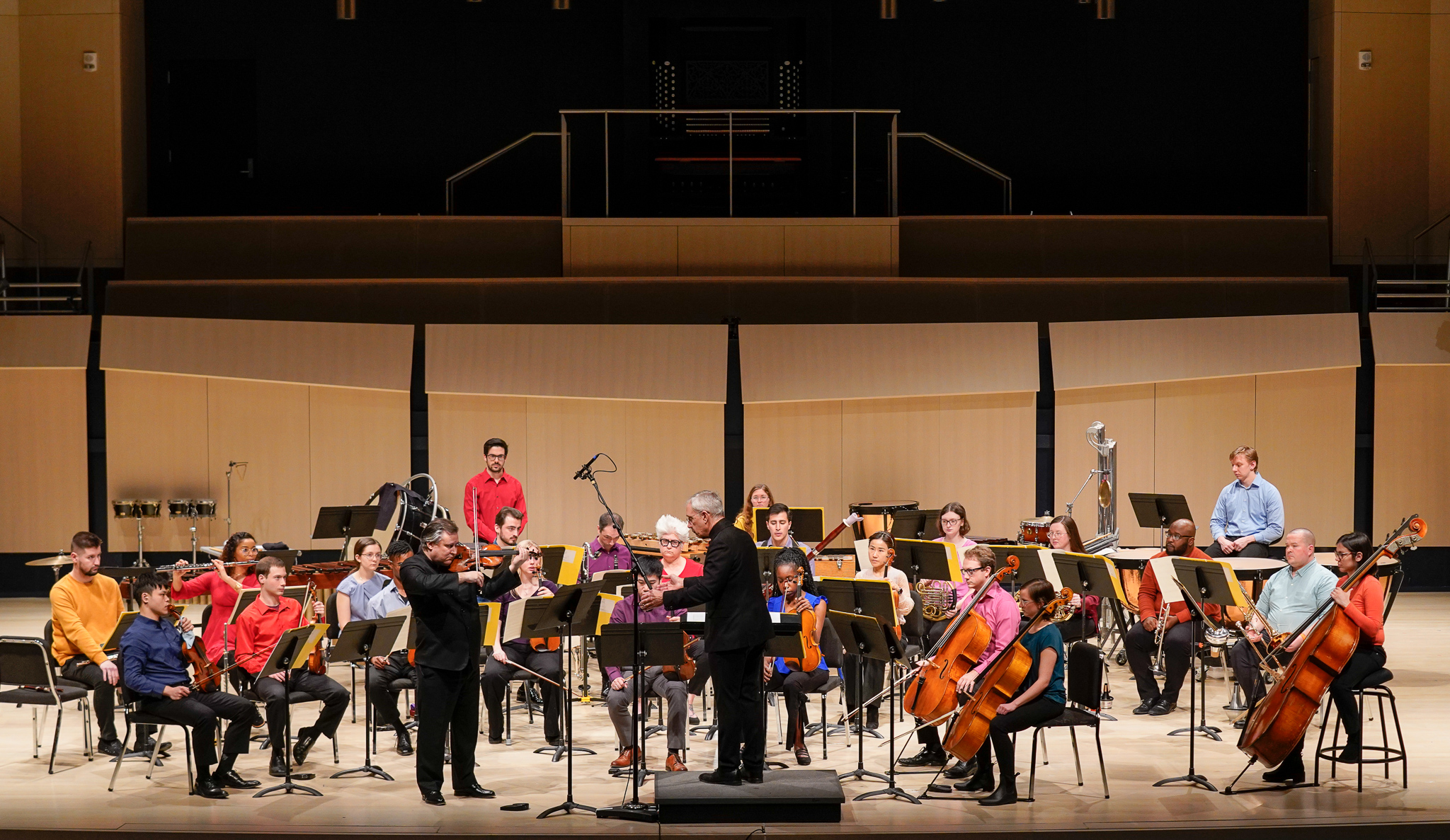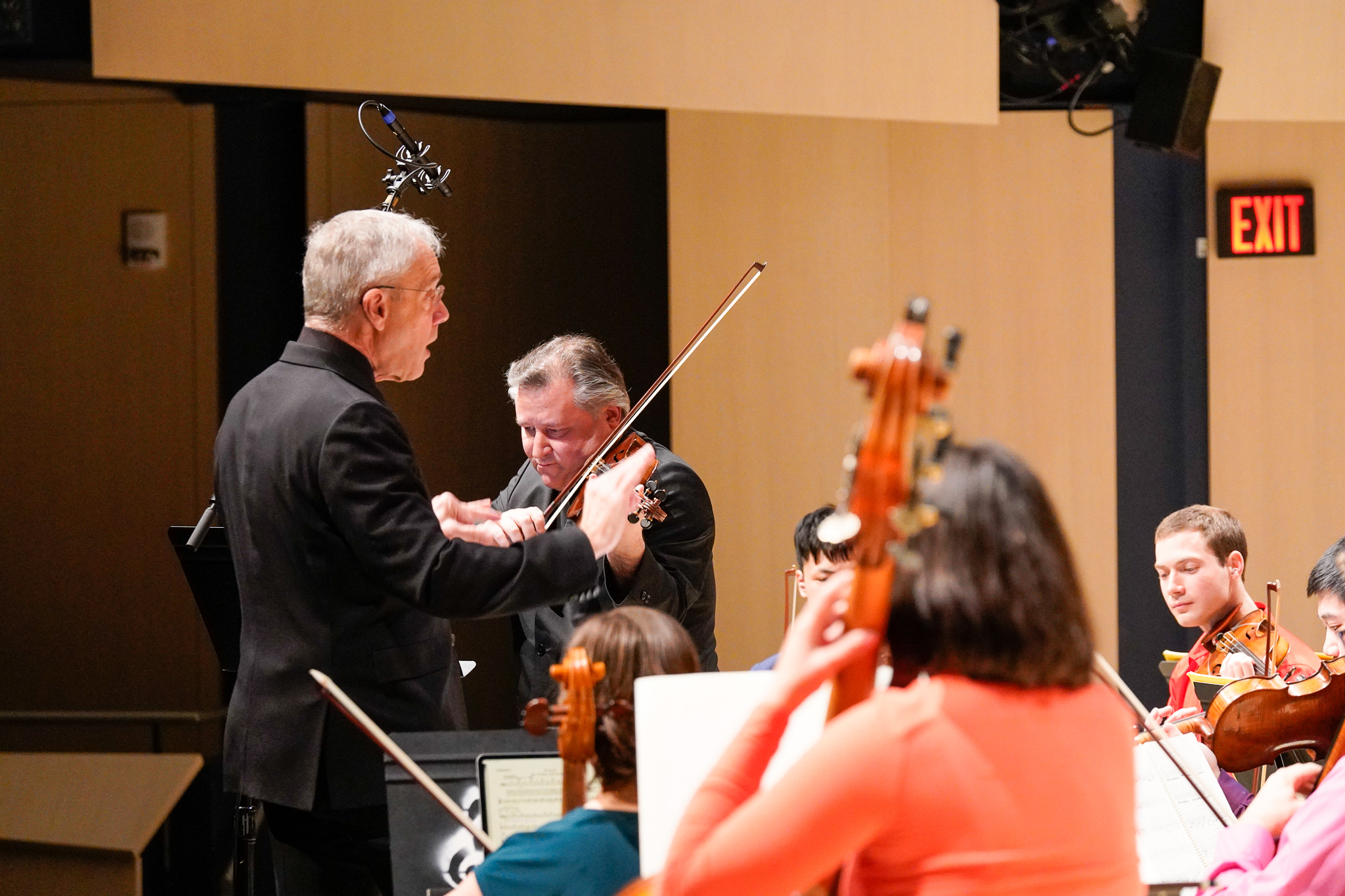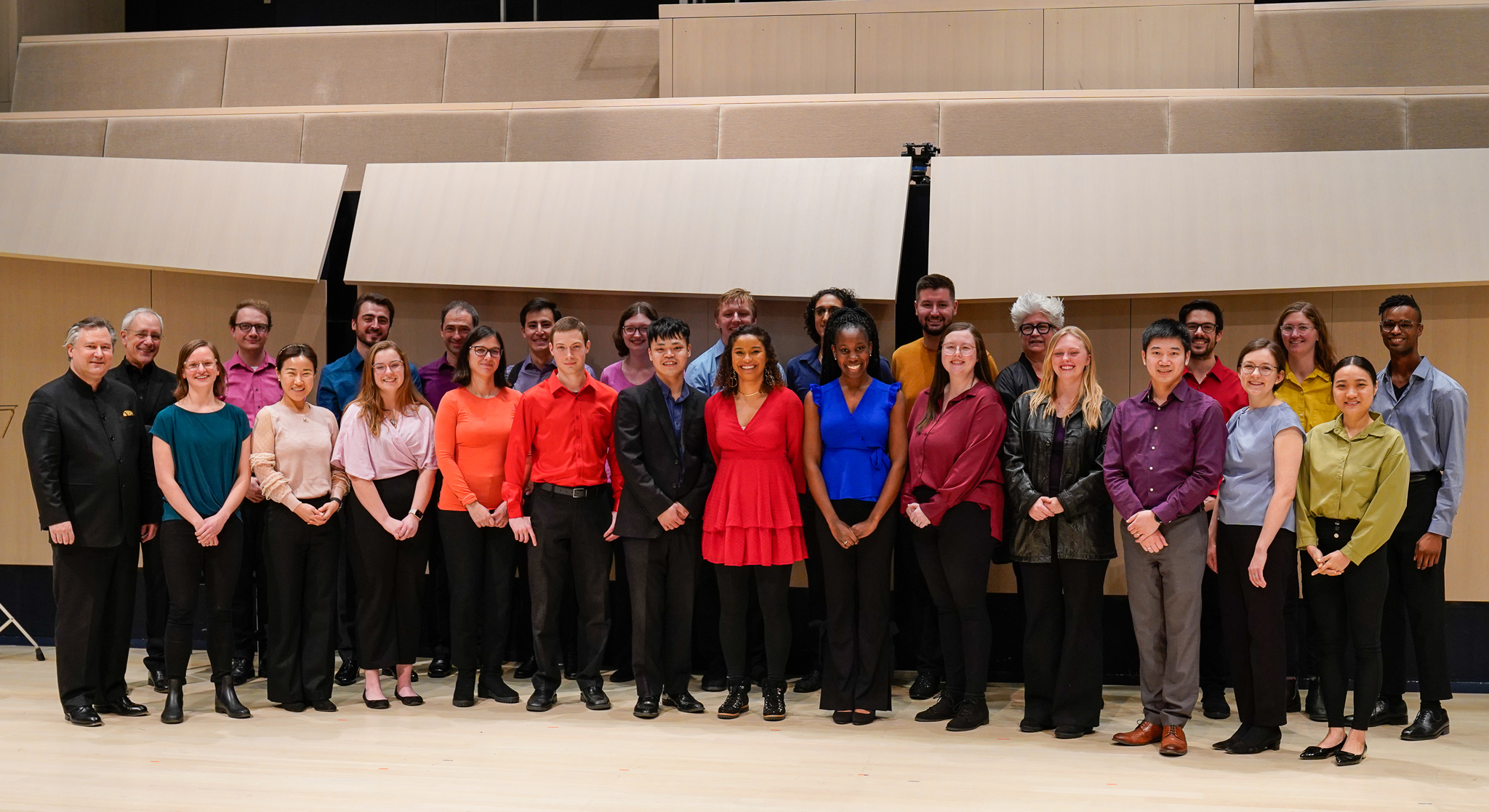CNM Ensemble Concert III
Sunday, February 19, 2023 at 7:30p in the Concert Hall
Featuring guest violinist Wolfgang David, Vienna
Program
Symphony of Light (2021-22) world premiereI. Quarter = 84II. Half = 64 III. Quarter = 62 |
Irina DUBKOVA(b. 1956) |
| Tâmila Freitas de Souza, flute Lisa Ryoo, oboe Sayyod Mirzomurodov, clarinet Carlos Manuel Lopez Soria, bassoon Kristen Ronning, horn Anna Kelly, trumpet Xiaoyu Liu, trombone John Reyna, tuba McKenna Blenk, Peter Grubisich, Gabriel Albertus, percussion Junhong Zhou, violin I ShengHo Wang, violin II Fatima Gassama, viola Hanna Rumora, violoncello Natalia Terra, double bass David Gompper, conductor |
intermission
Violin Concerto (1990/92)I. PraeludiumII. Aria, Hoquetus, Choral III. Intermezzo IV. Passacaglia V. Appassionato |
György LIGETI(b. 1923-2006) |
| Tâmila Freitas de Souza, flute I Joshua Paul Stine, flute II Lisa Ryoo, oboe Sayyod Mirzomurodov, clarinet Jean-François Charles*, bass clarinet Carlos Manuel Lopez Soria, bassoon Kristen Ronning & Anna Cullinan, horns Michael Gause*, trumpet Jonathan Allen*, trombone McKenna Blenk, Peter Grubisich, Gabriel Albertus, percussion Junhong Zhou, violin scordatura ShengHo Wang, Michael Klyce, Ramel Price, Oriana Ross, violins Fatima Gassama, viola scordatura Christine Rutledge* & Donghee Han, violas Hanna Rumora & Josh DeVries, violoncelli Natalia Terra, double bass Wolfgang David, violin solo David Gompper, conductor *=School of Music faculty |
Performer biography
|
|
Composer bios and program notes
| The Symphony of Light (2021-22), dedicated to the memory of my parents and to all parents who gave their children the happiness of life, consists of three parts, traditionally mystical that refers to the Trinity. Each movement develops its own path towards light in a simple and clear musical language, clear concepts of life, love and death. The composition was written for the University of Iowa’s Center for New Music, David Gompper, director. |

Dubkova has participated in many competitions and festivals, include the International Organ Gedilke’s Festival, Leonid Roizman’s Organ Festival, International Moscow Autumn, Universe of Sound, Nippon Kokoro, Earino Spring Festival, All-Russia Harp Festival, etc. Performances of her symphonic, chamber, vocal and choral music have been heard across the Russia and in many regions of the world: Austria, Germany, Finland, Greece, Switzerland, and the US. Irina Dubkova currently teaches composition at the Moscow State P.I. Tchaikovsky Conservatory. Her students hail from Russia, China, USA, Japan, Luxembourg, Great Britain, Italy, and Korea. Many of them have become laureates of international competitions, successfully teaching and performing in academies throughout the world. |
| Violin Concerto (1992) The first version of the concerto consisted of three movements and was performed in 1990 in Cologne. Two years later, Ligeti revised the score by replacing the first movement and adding two new movements. This new version was premiered in 1992. Finally, he re-orchestrated the third and fourth movements, and the final version was first performed a year later by Gawriloff with the Ensemble InterContemporain conducted by Pierre Boulez. While composing the concerto, Ligeti originally planned an eight-movement work. Parts of the music for the unfinished movements were used by Gawriloff and Ligeti for the cadenza in the final movement, which Ligeti asks the performer to devise as an alternative to the already existing cadenza. Tonight’s performance will use a cadenza assembled by Wolfgang. The concerto represents his late style: a synthesis of avant-garde explorations and traditional melodic and formal conventions. The BBC's Stephen Johnson calls the concerto as "a kind of cornucopia of effects and techniques, a wild collage of atmospheres and colors." Among other effects, it uses "microtonality, rapidly changing textures, comic juxtapositions, Hungarian folk melodies, Bulgarian dance rhythms, references to medieval and Renaissance music, and solo violin writing that ranges from the slow-paced and sweet-toned to the angular and fiery." During this time, Ligeti was interested in alternate tuning systems and harmonics. Thus, one violin and one viola in the orchestra tune their strings to the natural harmonics of the bass player. The second movement can be loosely described as a set of variations adapted from the third of his Six Bagatelles for Wind Quintet, itself an arrangement of the seventh piece from Musica ricercata, but slowed down and heard nearly two octaves lower. |

|


